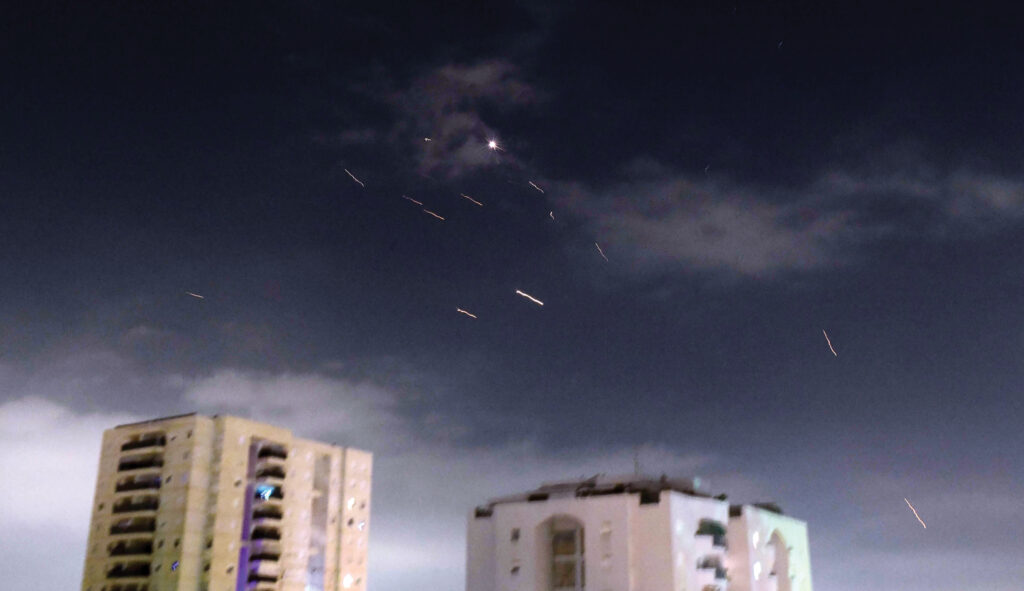The Little Known Story Of An Irish Regiment That Helped Turn The Tides Of The American Civil War

July 2, 1863 was a sweltering afternoon, and two miles south of a little Pennsylvania town called Gettysburg, Union Maj. Gen. Gouverneur Warren was horrified. The chief engineer of the North’s Army of the Potomac, he was tasked by his commanding officer, Maj. Gen. Meade, to ascertain the strength of the Union position on the far southern end of the line. Believing that the 90,000-man army’s left flank was solidly anchored atop a steep, bald-faced hill called Little Round Top — which presented a commanding prospect over the entire battlefield — Warren was stunned to find only a handful of signalmen atop this most strategic piece of ground. And through his binoculars the Union general could see waves of men in gray and butternut uniforms, Robert E. Lee’s ferocious Rebel horde, marching at the double-quick through the broken ground to assault this most undefended hill.
Thinking fast, Warren spurred his horse down the reversed slope and galloped over to the first group of blue-clad Federal troops he encountered marching towards the left flank. It so happened to be the 140th New York Regiment, commanded by Col. Patrick “Paddy” O’Rorke, who was at the head of a long column of men from the 3rd Brigade, 2nd Division, V Corps. “Paddy!” shouted Warren as the tumult of approaching battle grew louder, telling all present that a major engagement was underway. “Give me a regiment!”
O’Rorke complied and soon had his men positioned on Little Round Top with the rest of the brigade following, just as the hollering Rebels approached. Throughout the late afternoon the fighting raged across the slopes of Little Round Top, with the extreme left of the Union line under relentless assault from Rebel forces who seemed to understand the significance of the high ground. At one point, the Yankee line just below the crest faltered, and once again O’Rorke and his mostly Irish-immigrant band of soldiers, who in civilian life had planted roots in Rochester, New York, answered the call. Following the sound of the guns, O’Rorke, on horseback, spotted the breach in the line below. He dismounted, determined to lead his men on foot into their first serious action of the war. “Down this way, boys!” the energetic Colonel shouted, drawing his sword. As his men formed into lines of battle, O’Rorke climbed a boulder and called out: “Here they are, men! Commence firing!” And the air became a torrent of .58 caliber projectiles ripping the opposing ranks apart.
Paddy O’Rorke’s family had emigrated to America in 1838 from County Caven, Ireland when he was a year old, but he never forgot his Irish roots. A graduate of the West Point class of 1861, he was slated for higher command. But it was not to be. “It was about this time,” wrote a sergeant of the 140th New York, “that Col. O’Rorke, cheering his men and acting as he always does, like a brave and good man, fell, pierced through the neck by a Rebel bullet.” His enraged infantrymen charged and several zeroed in on the hapless Confederate suspected of inflicting their beloved commander’s mortal wound. “That was Johnny’s last shot,” wrote another New Yorker on the scene, “for a number of Companies A and G fired instantly.” They riddled the unfortunate Rebel with no fewer than seventeen bullets.
Ireland had given yet another son of Erin to the cause of the Union. Of the 500 men of the 140th New York who went into battle to avenge their fallen colonel, a quarter of them would become casualties before the day was out. Many military historians have offered that O’Rorke’s actions that day, his heroism and selflessness, were crucial to the Union Army’s left flank not crumbling at the most critical time of the battle. Certainly the 140th New York’s conduct was at least as pivotal to the Union victory as was that of the celebrated 20th Maine, and their Medal Of Honor-winning Col. Joshua Chamberlain. But they were Irish, and this was America in the mid-Nineteenth Century where the nativist America Party had come into prominence and anti-Irish, anti-immigrant fervor was high (“Irish Need Not Apply”) in their adopted country. Little Round Top was never taken.
Meanwhile, further up the line in the smoking valley one hundred fifty feet below and a mile to the north, one of the most peculiar scenes ever witnessed on an American battlefield was taking place. And this drama would also come courtesy of Irishmen who’d left their old home and were now defending their new one. Under the command of Galway-born Col. Patrick Kelly, this unit of 530 staunch Irish Catholic immigrants from New York, Philadelphia, and Boston, was known as “The Irish Brigade.” As they awaited to go into what was the most violent and blood-soaked of the three days of the largest and costliest battle ever fought in North America, the men all took a knee, with caps in hand and heads bowed. As the men contemplated how long they had to live once the order to advance towards the rapidly approaching enemy was given, their chaplain, Father William Corby, stood upon a boulder. There, shouting above the din of battle swirling all around, he lead a prayer granting the men absolution as their emerald green battle flag snapped in the warm summer breeze overhead.
The brigade then formed up in line of battle and pitched into the fight, charging headlong under intense fire through a wheat field strewn with the wreckage of war and into a tangled woodlot filled with Rebels in a desperate action to break up Lee’s attack on this sector of the line. They emerged from the fierce engagement minus forty percent of the men who’d just been granted absolution an hour before…but with all their battle flags and honor intact.
Other units made up of predominantly Irish immigrants fought throughout the war with equal élan, and the sacrifices they made for their new country defy the imagination. Some wore Confederate grey as well as Union blue, adding to their often tragic tale. At the Battle of Fredericksburg, the Union Irish Brigade was utterly annihilated as they were ordered into a series of fruitless, suicidal charges against a heavily entrenched Confederate army perched high on a hill and behind a stone wall. By the end of that day’s fighting, the brigade counted just 256 survivors in its decimated ranks — out of the 1,200 it took into battle that morning. “Irish blood and Irish bones cover that field today,” wrote one survivor. Sadly, many of the men from the 24th Georgia who choked back tears as they methodically shot them down were Irishmen too.
All told, 150,000 Irish-born soldiers fought for the Union, 40,000 for the Confederacy, representing a significant portion of the soldiers enlisted in each army. This does not include the many more that were American-born and of Irish descent.
Today the Irish Brigade’s lineage, and by rights the memory of all the Irish fighting men during the Civil War, lives on in the “Fighting 69th” of the New York National Guard, who saw combat in World War I, World War II (Pacific) and even Baghdad in 2004-2005. Ironically, or perhaps poignantly, their nickname was bestowed upon them by Robert E. Lee, who after observing their bravery for himself at Fredericksburg, was heard to say as they formed for the grim charge “Ah yes, the Fighting 69th.” Not a bad endorsement.
So as you celebrate St. Patrick’s Day, remember the Irish who fought and strove and perished over the hallowed ground of our history. The emerald green banner has often been saturated with the blood of those who gave so much to insure that their newly adopted homeland should survive and prosper. And if perchance you should see some men and women in green parading through your streets on March 17, singing songs and hoisting a pint in toast to their heritage, you best remember the Gaelic battle cry of the Irish Brigade who preceded these happy bands: “Faugh A Ballagh!”, “Clear the Way.” Many an enemy on many a battlefield no doubt wished they heeded this call.
Brad Schaeffer is a commodities trader and writer whose articles have appeared in The Wall Street Journal, New York Daily News, National Review, Celeb Magazine, Zerohedge, Frumforum, and other news outlets. He is the author of the acclaimed World War II novel Of Another Time And Place
The views expressed in this piece are the author’s own and do not necessarily represent those of The Daily Wire.
The Daily Wire is one of America’s fastest-growing conservative media companies and counter-cultural outlets for news, opinion, and entertainment. Get inside access to The Daily Wire by becoming a member.
" Conservative News Daily does not always share or support the views and opinions expressed here; they are just those of the writer."





